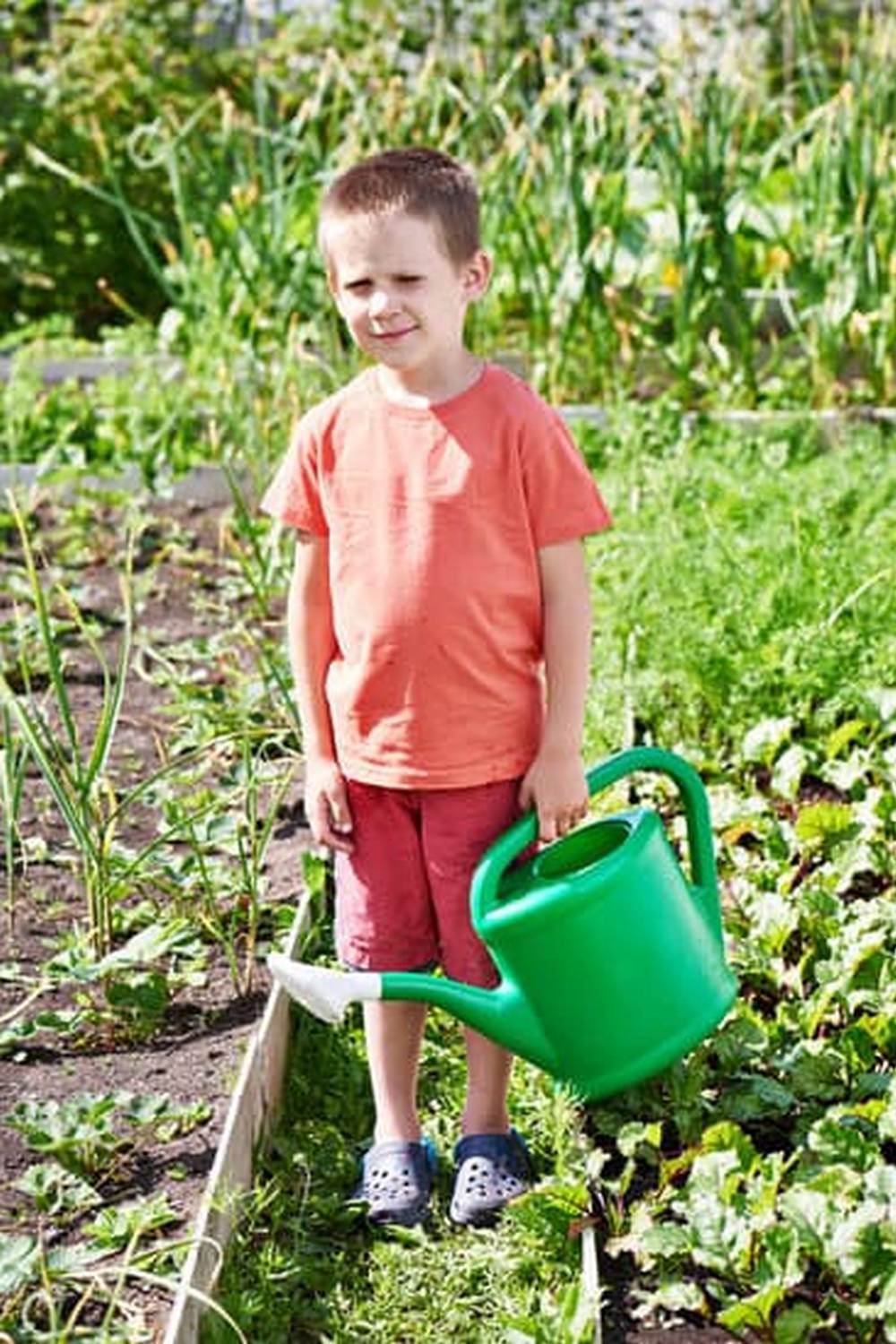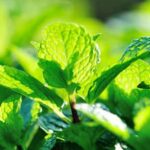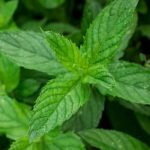Are you interested in growing your own vegetables and herbs but don’t have a traditional garden space? Indoor gardening for vegetables and herbs might be the solution for you. Whether you live in an apartment, have a small backyard, or simply want to enjoy fresh produce year-round, indoor gardening is a convenient and rewarding way to grow your own food.
Indoor gardening offers numerous benefits, including the ability to enjoy fresh produce regardless of the season, convenience of having herbs and vegetables readily available in your home, and the satisfaction of knowing exactly where your food comes from. With the right containers, tools, and knowledge of ideal growing conditions, you can successfully cultivate a thriving indoor vegetable and herb garden.
In this article, we will explore everything you need to know about indoor gardening for vegetables and herbs. From choosing the right containers and essential tools to selecting the best plants for indoor cultivation and troubleshooting common issues, we’ll provide you with a comprehensive guide to getting started on your indoor gardening journey.
Whether you’re new to gardening or an experienced green thumb looking for ways to maximize space in small areas, this comprehensive guide has something for everyone.
Benefits of Indoor Gardening Including Fresh Produce Year-Round and Convenience
Indoor gardening for vegetables and herbs offers a wide range of benefits that make it an attractive option for many people. One of the most appealing advantages is the ability to enjoy fresh produce year-round, regardless of the weather or outdoor growing conditions. This means that you can have access to your favorite herbs and vegetables at any time, without having to rely on store-bought options that may not be as fresh or flavorful.
In addition to providing fresh produce year-round, indoor gardening also offers a high level of convenience. With an indoor garden, you can simply step into your kitchen or living space and harvest the herbs and vegetables you need for your meal, right at the moment you need them. This eliminates the need for frequent trips to the grocery store and ensures that you always have access to fresh, homegrown ingredients.
Another benefit of indoor gardening for vegetables and herbs is the ability to control the growing environment more easily. You can tailor the lighting, temperature, and humidity to suit the specific needs of your plants, which can result in healthier growth and higher yields. Additionally, indoor gardening allows you to avoid common outdoor gardening challenges such as pests and extreme weather conditions, giving you more consistent results.
| Benefits of Indoor Gardening | Details |
|---|---|
| Fresh Produce Year-Round | Access to homegrown herbs and vegetables regardless of seasonal changes |
| Convenience | Easily harvest ingredients right in your own home without trips to the store |
| Controlled Growing Environment | Adjust lighting, temperature, and humidity for healthier plants and higher yields |
Choosing the Right Containers for Indoor Gardening, Considering Size, Drainage, and Material
When it comes to indoor gardening for vegetables and herbs, choosing the right containers is crucial for the success of your plants. The size, drainage, and material of the containers all play a significant role in ensuring that your indoor garden flourishes.
Size Matters
The size of your container can greatly impact the growth and health of your plants. For smaller herbs such as basil or cilantro, a smaller pot ranging from 6 to 8 inches in diameter may be sufficient.
However, for larger vegetables like tomatoes or peppers, you will need a larger container with a diameter of at least 12 inches to accommodate their root systems. It’s important to consider the mature size of the plant when selecting a container to ensure that it has enough space to grow.
Proper Drainage
Good drainage is essential for indoor gardening. Without proper drainage, excess water can collect in the soil, leading to root rot and other issues. When selecting containers, look for ones with drainage holes at the bottom to allow excess water to escape. If you have containers without drainage holes that you want to use, consider using a layer of gravel at the bottom before adding soil to help with drainage.
Material Matters
The material of your containers can also impact the success of your indoor garden. Materials such as plastic, ceramic, or terra cotta are commonly used for indoor gardening. Plastic pots are lightweight and retain moisture well, making them suitable for plants that require more frequent watering.
Ceramic pots are durable and come in a variety of decorative options but can be heavier and more prone to drying out quickly. Terra cotta pots are porous and allow air and moisture exchange but may require more frequent watering due to their tendency to dry out faster.
Considering these factors when choosing containers for indoor gardening for vegetables and herbs can help set your plants up for success and ensure a thriving indoor garden.
Essential Tools and Supplies for Successful Indoor Gardening
When it comes to indoor gardening for vegetables and herbs, having the right tools and supplies is essential for success. One of the most important tools you will need is a good set of gardening gloves to protect your hands while tending to your plants. Additionally, having a set of small hand tools such as a trowel, pruners, and a watering can will make it easier to care for your indoor garden.
In terms of supplies, high-quality potting mix is crucial for providing the proper nutrients and drainage for your vegetables and herbs. It’s also important to have containers that are the right size for the plants you want to grow, with adequate drainage holes to prevent waterlogging. Consider investing in some plant food or fertilizer specifically designed for indoor use to ensure your plants have everything they need to thrive.
Another essential supply for successful indoor gardening is proper lighting. While natural light is best, not all indoor spaces receive sufficient sunlight for growing vegetables and herbs. In these cases, investing in artificial grow lights can be beneficial in providing the necessary light spectrum for healthy plant growth.
By having the essential tools and supplies on hand, you’ll be well-prepared to start your indoor vegetable and herb garden and nurture it into a thriving green space within your home.
Ideal Conditions for Indoor Gardening Such as Lighting, Temperature, and Humidity
Lighting
Proper lighting is crucial for the success of your indoor vegetable and herb garden. Most vegetables and herbs require a minimum of 6 hours of sunlight per day. However, if you don’t have access to natural light, you can invest in grow lights specifically designed for indoor gardening. LED grow lights are energy-efficient and can provide the full spectrum of light needed for plant growth.
Temperature
Maintaining the right temperature is vital for the health and growth of your indoor plants. Most vegetables and herbs thrive in temperatures between 65°F to 75°F during the day and slightly cooler at night. It’s important to place your indoor garden away from drafts or vents that may cause temperature fluctuations. Using a small fan can help circulate air and maintain an even temperature throughout your indoor garden space.
Humidity
The level of humidity in your indoor gardening space is also an important factor to consider. Most vegetables and herbs prefer a moderate level of humidity, around 40-60%. To increase humidity, you can mist your plants regularly or place a shallow tray filled with water and pebbles near your plants. If the humidity levels are too high, using a dehumidifier can help regulate the moisture content in the air.
By providing the ideal conditions of lighting, temperature, and humidity for your indoor vegetable and herb garden, you can ensure healthy growth and abundant harvests year-round. Paying attention to these factors will contribute to the success of your indoor gardening endeavors.
Best Vegetables and Herbs for Indoor Gardening, Including Low-Maintenance and High-Yield Options
When it comes to indoor gardening for vegetables and herbs, choosing the right plants is key to a successful harvest. Some vegetables and herbs are well-suited to thrive in indoor conditions, making them ideal choices for those looking to grow their own fresh produce year-round.
Low-maintenance vegetables that are perfect for indoor gardening include leafy greens like lettuce, spinach, and kale. These plants require minimal attention and can be grown in containers with ease. Herbs such as basil, cilantro, and parsley are also low-maintenance options that not only add flavor to your dishes but also thrive in indoor environments.
For those seeking high-yield options for their indoor garden, tomatoes and peppers are excellent choices. Compact varieties of these plants can be grown in containers indoors and produce a bountiful harvest. Additionally, microgreens like radishes, arugula, and mustard greens are high-yield options that are packed with nutrients and flavor.
When selecting the best vegetables and herbs for indoor gardening, it’s important to consider the available space, lighting conditions, and personal preferences. By choosing low-maintenance and high-yield options that suit your indoor environment, you can enjoy a thriving vegetable and herb garden throughout the year.
Overall, there are plenty of vegetables and herbs that are well-suited for indoor gardening. Whether you prefer low-maintenance options like lettuce and basil or high-yield choices such as tomatoes and microgreens, there’s something for every indoor gardener to enjoy. With the right selection of plants, you can create a flourishing indoor garden that provides an abundance of fresh produce right at your fingertips.
Step-by-Step Guide to Planting and Maintaining Indoor Vegetable and Herb Gardens
For those looking to start their own indoor gardening for vegetables and herbs, it’s important to understand the step-by-step process for planting and maintaining a successful garden. Follow these guidelines to ensure your indoor garden thrives all year-round.
Step 1: Choosing the Right Containers
When starting an indoor vegetable and herb garden, it’s essential to choose the right containers for your plants. Consider the size of the plant as it grows, ensuring the container is large enough to accommodate its root system. Additionally, opt for containers with proper drainage to prevent waterlogged soil and root rot. Materials such as terra cotta or plastic are commonly used for indoor gardening, providing durability and moisture retention.
Step 2: Selecting the Right Soil
Selecting the right soil mixture is crucial for the success of your indoor vegetable and herb garden. Choose a high-quality potting mix that is well-draining and nutrient-rich, providing a healthy environment for your plants to thrive. Avoid using garden soil, as it may compact in containers and hinder proper drainage and root growth.
Step 3: Understanding Lighting Needs
Proper lighting is crucial for the growth of vegetables and herbs indoors. Most plants require at least six hours of sunlight daily, so locate your garden near a sunny window or consider supplementing with grow lights if necessary. It’s important to monitor the light requirements of each plant variety, adjusting their placement within your home accordingly.
Following these steps will help you get started with indoor gardening for vegetables and herbs in no time. By carefully selecting containers, soil, and understanding lighting needs, you can ensure that your indoor vegetable and herb garden will flourish throughout the year.
Troubleshooting Common Indoor Gardening Issues and How to Overcome Them
Indoor gardening for vegetables and herbs can be a rewarding experience, but it also comes with its own set of challenges. From pests to diseases, there are common issues that indoor gardeners may encounter. Here are some troubleshooting tips to help you overcome these challenges:
1. Pests: Common pests such as aphids, mites, and whiteflies can wreak havoc on your indoor garden. To combat these pesky intruders, try introducing beneficial insects like ladybugs or lacewings to prey on the pests. You can also use insecticidal soaps or neem oil to control infestations while keeping your indoor garden chemical-free.
2. Diseases: Fungal diseases like powdery mildew and damping-off can affect your plants in an indoor setting. To prevent these diseases, make sure your plants have proper air circulation and avoid overwatering. If you do notice signs of disease, remove affected plants immediately to prevent further spread.
3. Nutrient Deficiencies: Indoor plants may suffer from nutrient deficiencies due to poor soil quality or lack of proper fertilization. Consider using a balanced fertilizer specifically formulated for indoor plants to ensure they receive the necessary nutrients for healthy growth.
4. Temperature and Humidity Fluctuations: Inconsistent temperature and humidity levels can stress your indoor plants, leading to stunted growth or wilting. Invest in a good quality thermometer and hygrometer to monitor these conditions regularly, and consider using humidifiers or fans to create a more stable environment for your plants.
By being proactive in addressing these common issues, you can maintain a thriving indoor garden full of delicious vegetables and aromatic herbs all year round. Remember that patience and attentiveness are key when it comes to successful indoor gardening for vegetables and herbs.
Maximizing Space Through Vertical Gardening and Creative Arrangements in Small Spaces
In conclusion, indoor gardening for vegetables and herbs offers a convenient and sustainable way to have fresh produce year-round. By choosing the right containers, tools, and supplies, and creating ideal conditions for growing, it is possible to enjoy a successful indoor garden. From low-maintenance herbs to high-yield vegetables, there are plenty of options for those interested in indoor gardening.
One of the key benefits of indoor gardening is the ability to maximize space through vertical gardening and creative arrangements in small spaces. This allows individuals with limited space to still enjoy the rewards of growing their own food at home. By troubleshooting common issues and learning how to overcome them, anyone can successfully maintain an indoor vegetable and herb garden.
Frequently Asked Questions
What Herbs and Vegetables Can Grow Indoors?
Many herbs and vegetables can thrive indoors, including basil, mint, cilantro, parsley, chives, and thyme. Leafy greens like lettuce, spinach, and kale also do well in indoor environments.
What Fruits and Vegetables Can You Grow Inside Your House?
Fruits like strawberries, tomatoes (in smaller varieties), and dwarf citrus trees can be grown inside the house with proper care. Vegetables such as peppers, carrots (in deep containers), and microgreens are also suitable for indoor cultivation.
Is an Indoor Vegetable Garden Worth It?
An indoor vegetable garden can definitely be worth it for many people. It allows for fresh produce year-round, especially in areas with harsh winters or limited outdoor space. Additionally, growing your own vegetables indoors can be a rewarding and cost-effective hobby that provides a sense of accomplishment and connection to nature.

If you’re looking to get into vegetable gardening, or are just looking for some tips on how to make your current garden better, then you’ve come to the right place! My name is Ethel and I have been gardening for years. In this blog, I’m going to share with you some of my best tips on how to create a successful vegetable garden.





